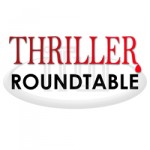

August 5 – 11: “How do you seamlessly interweave the plots, sub-plots, and filler scenes?”
 This week we’re talking with ITW Members Heather Redmond, Lynn Chandler Willis, J. A. Walsh and Aoife Clifford. The question of the week for our authors is: How do you seamlessly interweave the plots, sub-plots, and filler scenes in your novels?
This week we’re talking with ITW Members Heather Redmond, Lynn Chandler Willis, J. A. Walsh and Aoife Clifford. The question of the week for our authors is: How do you seamlessly interweave the plots, sub-plots, and filler scenes in your novels?
 Aoife Clifford is the author of All These Perfect Strangers, which was long-listed for both the Australian Industry General Fiction Book of the Year and the Voss Literary Prize. Born in London of Irish parents, she grew up in New South Wales and now lives in Melbourne. Clifford has won two premier short story prizes for crime fiction in Australia, the Scarlet Stiletto and the S.D. Harvey Ned Kelly Award, among other prizes. She has also been shortlisted for the UK Crime Association’s Debut Dagger.
Aoife Clifford is the author of All These Perfect Strangers, which was long-listed for both the Australian Industry General Fiction Book of the Year and the Voss Literary Prize. Born in London of Irish parents, she grew up in New South Wales and now lives in Melbourne. Clifford has won two premier short story prizes for crime fiction in Australia, the Scarlet Stiletto and the S.D. Harvey Ned Kelly Award, among other prizes. She has also been shortlisted for the UK Crime Association’s Debut Dagger.
 J. A. Walsh worked in intelligence and counter-terrorism after the 9/11 attacks, before embarking on a career advising the U.S. military on energy security strategies. He has degrees in Russian, English literature, and Environmental Law. He lives in North Carolina with his family.
J. A. Walsh worked in intelligence and counter-terrorism after the 9/11 attacks, before embarking on a career advising the U.S. military on energy security strategies. He has degrees in Russian, English literature, and Environmental Law. He lives in North Carolina with his family.
 Heather Redmond is an author of commercial fiction and also writes as Heather Hiestand. First published in mystery, she took a long detour through romance before returning. The author of many novels, novellas, and short stories, she has achieved best-seller status at Amazon and Barnes and Noble. Her 2018 novel, A Tale of Two Murders, received a coveted starred review from Kirkus Reviews and was a multi-week Barnes & Noble Hardcover Mystery Bestseller.
Heather Redmond is an author of commercial fiction and also writes as Heather Hiestand. First published in mystery, she took a long detour through romance before returning. The author of many novels, novellas, and short stories, she has achieved best-seller status at Amazon and Barnes and Noble. Her 2018 novel, A Tale of Two Murders, received a coveted starred review from Kirkus Reviews and was a multi-week Barnes & Noble Hardcover Mystery Bestseller.
- LAST GIRL MISSING with K.L. Murphy - July 25, 2024
- CHILD OF DUST with Yigal Zur - July 25, 2024
- THE RAVENWOOD CONSPIRACY with Michael Siverling - July 19, 2024

